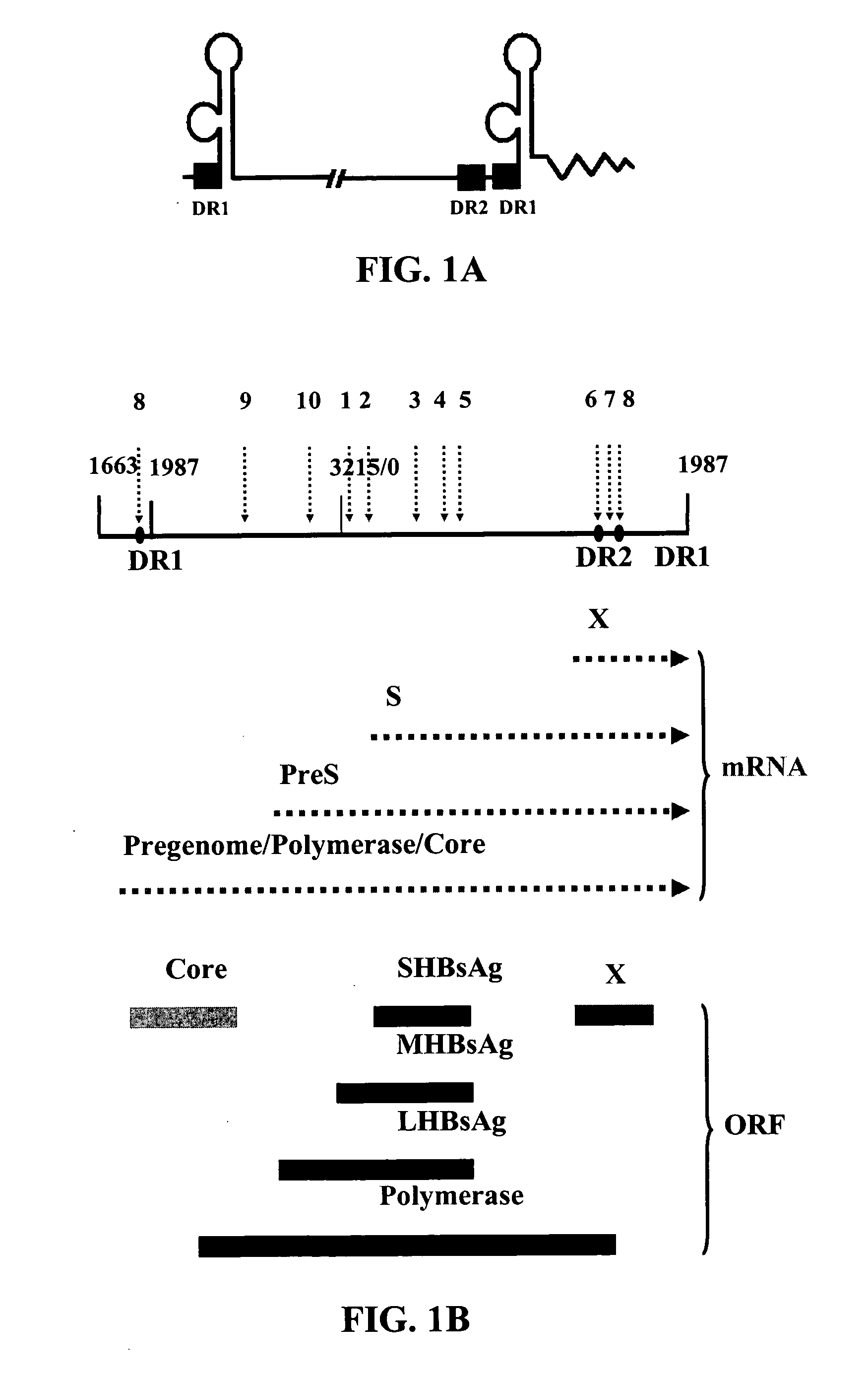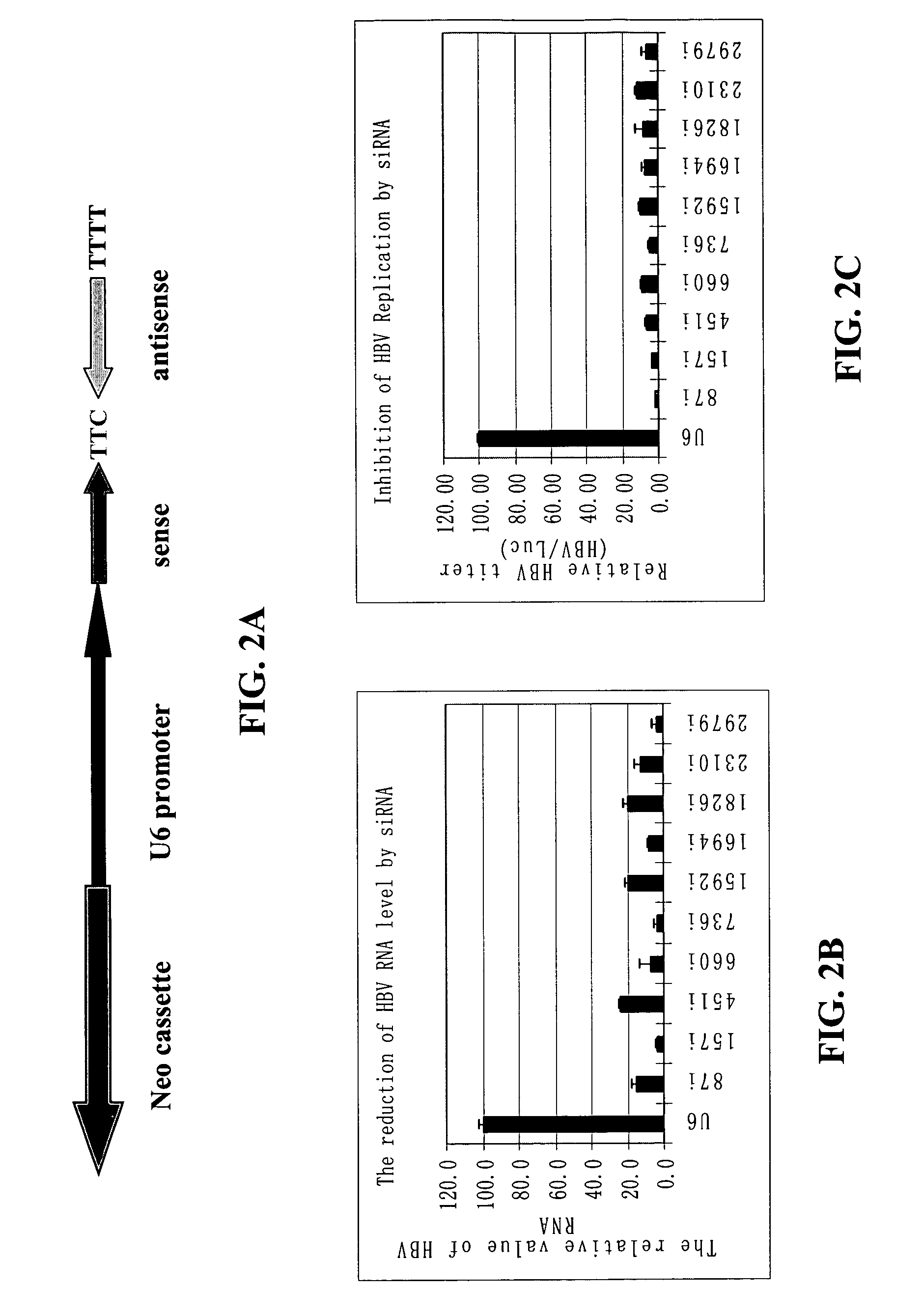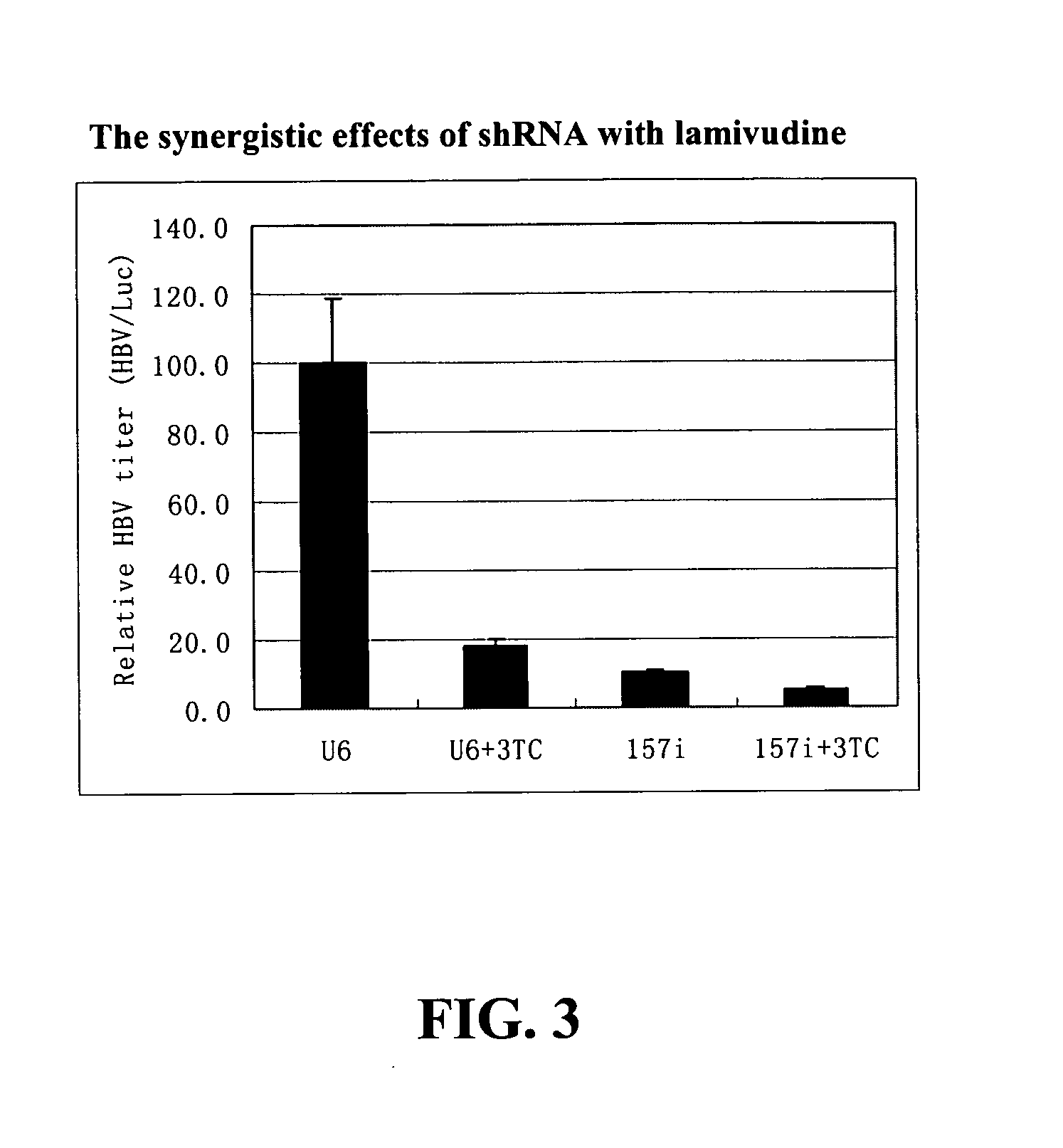Inhibition of hepatitis B virus (HBV) replication by RNA interference
- Summary
- Abstract
- Description
- Claims
- Application Information
AI Technical Summary
Benefits of technology
Problems solved by technology
Method used
Image
Examples
Embodiment Construction
[0013] The present invention relates to the inhibition of Hepatitis B virus (HBV) replication using RNA molecules of the present invention. Specifically, the RNA molecules of the present invention are double-stranded ribonucleic acid molecules (dsRNA). Specifically, the invention relates to small interfering RNAs (siRNA) which are double-stranded RNAs that direct the sequence-specific degradation of messenger RNA in mammalian cells. The invention relates to development of a new anti-HBV therapy by inhibition of Hepatitis B Virus (HBV) replication using stably-expressed short hairpin RNAs (shRNA), which degrade HBV pregenomic RNA and message RNAs.
[0014] 5.1. Inhibition of HBV Genes
[0015] Disruption of the HBV life cycle will inhibit HBV replication. Upon infection, the partial double strand DNA of the present invention is repaired to form a 3.2-kb cccDNA, which serves as a template to transcribe overlapping RNA species including a 3.5-kb pregenomic RNA (FIG. 1A) and mRNAs (FIG. 1B) c...
PUM
| Property | Measurement | Unit |
|---|---|---|
| Degradation properties | aaaaa | aaaaa |
Abstract
Description
Claims
Application Information
 Login to View More
Login to View More - R&D
- Intellectual Property
- Life Sciences
- Materials
- Tech Scout
- Unparalleled Data Quality
- Higher Quality Content
- 60% Fewer Hallucinations
Browse by: Latest US Patents, China's latest patents, Technical Efficacy Thesaurus, Application Domain, Technology Topic, Popular Technical Reports.
© 2025 PatSnap. All rights reserved.Legal|Privacy policy|Modern Slavery Act Transparency Statement|Sitemap|About US| Contact US: help@patsnap.com



